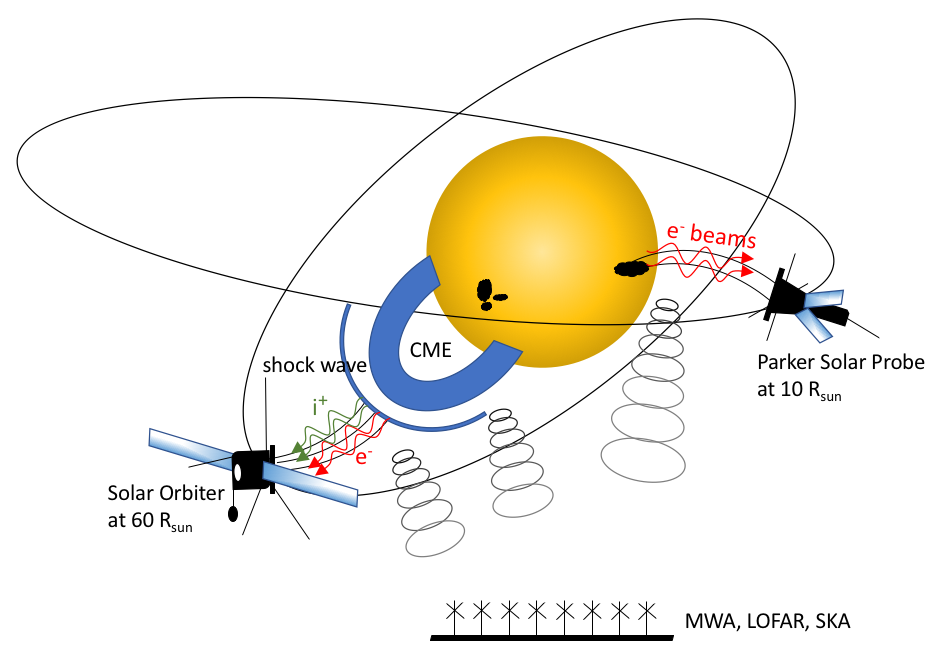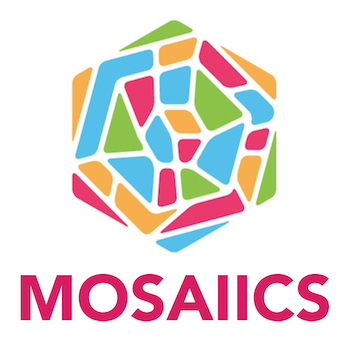The five-year MOSAIICS project is an interdisciplinary, yet focused effort, which aims to transform our understanding of how solar energetic particles (SEPs) are produced in coronal mass ejections (CMEs). It will combine the three crucial aspects necessary for understanding the coronal acceleration of energetic charged particles, namely: detailed remote observations of coronal shocks and electron beams via low frequency radio and extreme ultraviolet (EUV) imaging, ground-breaking in situ energetic particle measurements further out but still close to the Sun, as well as data-driven models of coronal shocks, SEP acceleration and transport, connecting the remote and in situ observations. To achieve the project objectives, We will develop transformative methods for processing low frequency solar radio imaging, and for analyzing them together with EUV observations. Work on this project will help develop qualitatively new expertise at the Institute of Astronomy of the BAS.

The MOSAIICS project is timely and necessary for the following reasons: (i) modern, computationally intensive analysis techniques are required, in order to benefit from exciting new remote and in situ observing capabilities, which will produce Big Data – Parker Solar Probe, Solar Orbiter, the Murchison Widefield Array, LOFAR, and the Square Kilometer Array telescopes; (ii) The project methodologies will reach maturity as the next solar cycle picks up, allowing immediate application to new events; (iii) Renewed aspirations for manned space explorations will require in the next decade more advanced forecasting of space weather radiation risk, based on early characterization of CME and SEP events; (iv) Bulgarian research institutions have recently begun a process of development of LOFAR observing capability and of joining the international LOFAR consortium. The project results will impact both the analysis techniques for solar remote imaging, and our understanding of the processes leading to SEP acceleration in CMEs.
MOSAIICS Objectives
Develop cutting-edge methodology for solar eruption detection and characterization,
- Based on Computer Vision and Deep Learning methods,
- Apply to multi-frequency/multi-wavelength solar imaging data;
Unlock the potential of uniquely rich low-frequency solar radio imaging observations
- Early stages of coronal eruptions;
- Improve imaging pipeline, apply to MWA, LOFAR data
Transform our understanding of energetic particle acceleration in solar eruptions, combining
- Detailed remote radio observations of solar activity,
- Data-driven solar energetic particle (SEP) acceleration and transport models,
- In situ energetic particle data from Parker Solar Probe and Solar Orbiter.

The MOSAIICS project is divided into three scientific Work Packages, plus a management Work Package (WP1) and a Dissemination and Promotion Work Package (WP5), which will run throughout the entire project duration. Work on WP2 Deep Learning for Heliophysics will be performed mostly during the first two years of the project, when a postdoc will be dedicated to its tasks, and supported by a PhD student. WP3 Advanced Solar Radio Imaging will be performed during years 2-4 of the project. A dedicated postdoctoral researcher will be dedicated to the improvement and application of automated solar radio imaging processing pipelines with the help of a PhD student, while the PI will lead the science studies. WP4 Data-Driven SEP Modeling will take place mostly during years 4-5 of the project. The PI will lead the model development and validation, supported by a PhD student and a postdoc. The overlapping design of the Work Packages and the schedules of the postdocs and PhD students ensures the continuity and integrative nature of the project work.
Cross-cutting priorities
- Deep Learning concepts and models for intelligent Heliophysics;
- Improved characterization of CMEs/shock wave imaging for more accurate modeling of SEPs;
- Utilizing radio astronomical methods in the context of Heliophysics;
- Data-driven modeling of SEP acceleration from the Sun to 1 au.
Personnel
- PI: Dr. Kamen Kozarev, Institute of Astronomy and National Astronomical Observatory, Bulgarian Academy of Sciences – will lead the project and work on all Work Packages
- Postdoc #1 will work on transformative image processing and Deep Learning
- Postdoc #2 will work on processing and analyzing low-frequency radio observations
- Postdoc #3 will work on in situ observations and modeling of particle acceleration and transport
- PhD student #1 will work on EUV, radio data processing and Deep Learning
- PhD student #2 will work on in situ observations, modeling of particle acceleration and transport
The MOSAIICS project is funded under contract KP-06-DV-8/18.12.2019 to the Institute of Astronomy and NAO, BAS, under the National Scientific Program “VIHREN” of the Bulgarian National Science Fund.
